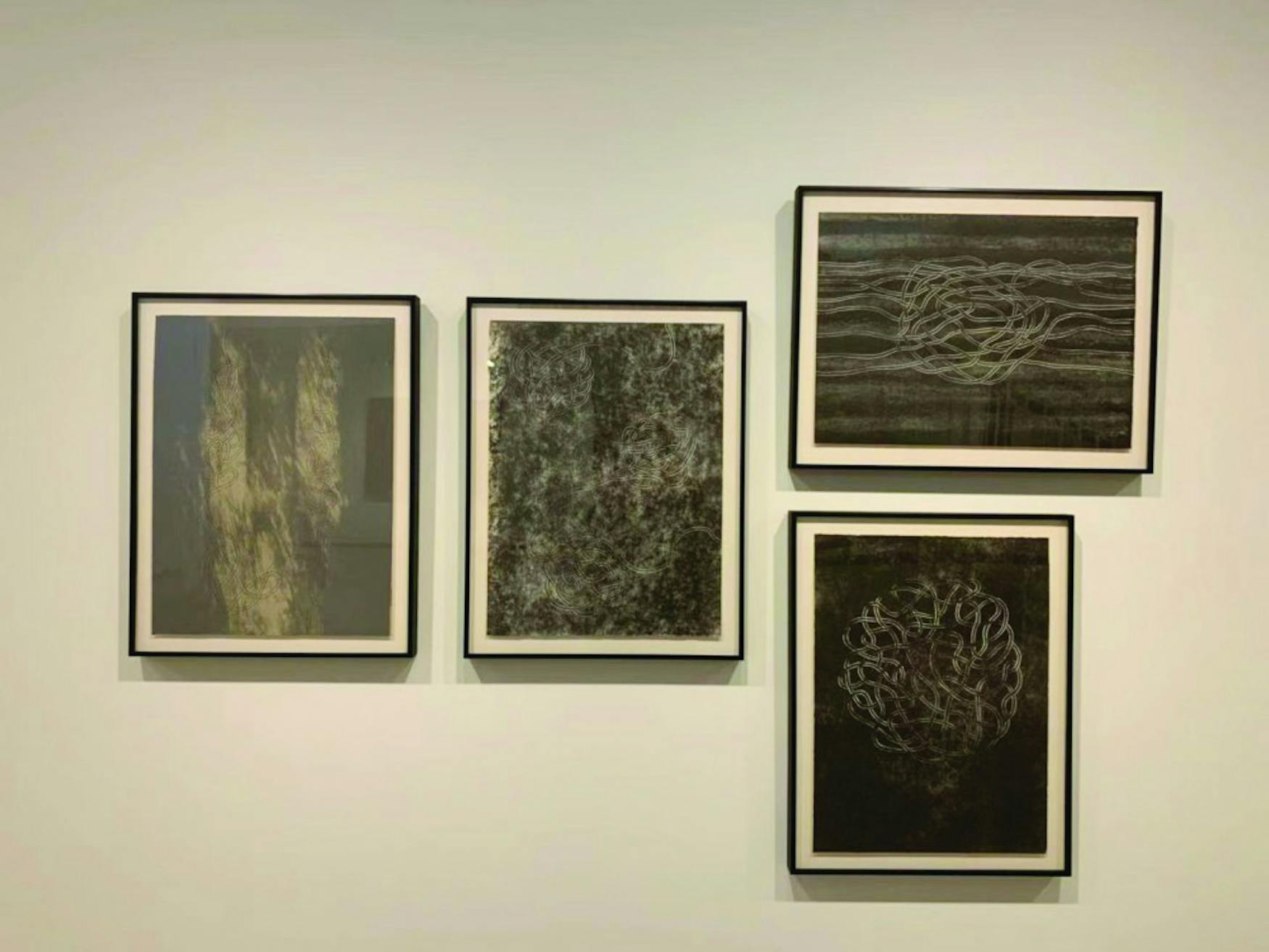Spotlight on Rose 09/10/2019
Anni Albers created the series “Line Involvement” in 1964 to explore the potential of lines of thread and the textiles they represent.
Threads in Albers’ series share similar thickness but vary in the ways they are folded. The first piece resembles a big ‘y’ formed by a chain of tangled threads. In the second piece, threads come from two opposite sides of the paper, interacting and creating a loose node in the center. When nodes are connected, we get the third piece. And in the very last piece, threads no longer have any connection with the fringe of the paper. A giant node floats in the air with both ends connecting to each other. Not only the pattern but also the four pieces differ in their background textiles. Albers boldly navigates different gradients of greyness to form the delicate patterns in the background.
I stared at the series as I walked by and began to wonder about the relationship between each design. Are they arranged in a specific sequence on purpose? What would be Albers’ mindset when she created the series and how did it change throughout the process? How are the threads interacting with the background? And even the most basic question — how many threads actually appear in each piece? One or more?And what are the meanings behind the number of threads appear in the lithography?
There are six total pieces in the series “Line Involvement,” and four of them are currently on exhibition in the Rose Museum. If you look at the six pieces in the order they were created (check out https://www.metmuseum.org/art/collection/search/711637), you will find the threads evolving from the simplicity of softly bending threads to the transition of tangled threads and the final stage of nodes. In the process, the strings gradually lose the connection with the edge of papers — the outside world — and gain complexity in their own shape, becoming completely independent in the graph. The theme of the exhibition in the Rose Museum is “tension between organic and geometric abstractions.” When threads gradually melt into the fluid greyness in the background, I see the boundary blurring.



Please note All comments are eligible for publication in The Justice.